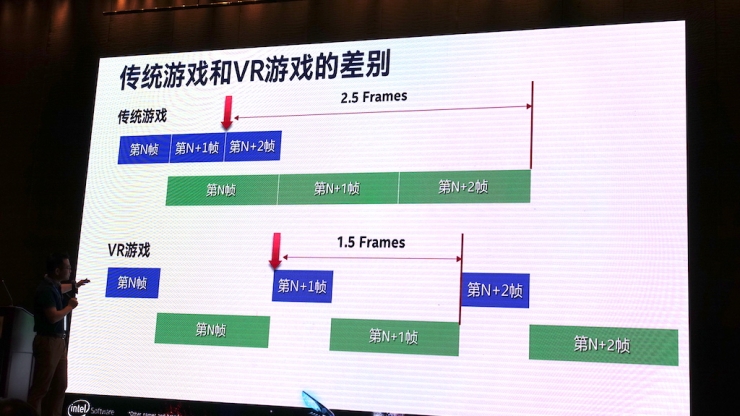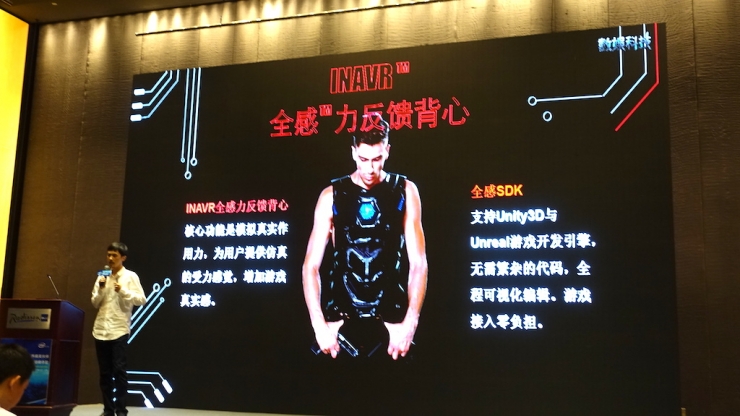CJ 2016 | Actually, Intel's participation in VR is far more than CPU
About VR hardware participants, the well-known manufacturers are the head-display factory (HTC Vive, Oculus, Gear VR), GPU (NVIDIA, AMD), and mobile chip manufacturers such as Qualcomm and ARM; when it comes to Intel Everybody thinks of CPU. For VR experience, many people will say: CPU is not important.
This "not important" is relative to the GPU. For a VR Ready host, it is important that the video card's performance is not enough, and the CPU performance does not affect the VR experience so much. Some media tests have found that using the same graphics card with different CPUs is not very different from the current VR game fluency. They also raised this issue at the Intel event site.
Intel's response to this is that, on the one hand, the CPU is not so unimportant, and it can actually become more important. On the other hand, Intel's involvement in VR is not just a CPU.
Compared to traditional game-heavy GPUs, VR games should be both CPU and GPU.If actual testing shows that the impact of CPU is not great, what does Intel think of it? According to Li Xin, director of the partnership division of Intel Asia Pacific R&D Co., Ltd., a good VR experience (90Hz refresh rate, 20ms delay) has basic requirements for the CPU. For example, the minimum requirement for a computer CPU for the HTC Vive is i5 4590.
Then he explained why the importance of CPU in VR game applications should be greater than in traditional games. This mentions the difference between traditional games and VR games.

Traditional game GPUs are the bottleneck. A lot of work is focused on GPU optimization, and indeed it is. What I want to talk about now is that the distribution of traditional games CPU and GPU is different from VR games.
Let's look at traditional games first. We must first calculate what each frame looks like. After the CPU calculates it, it is lost to the GPU to calculate. In other words, the GPU calculation takes a long time. In the GPU computing process, the CPU will not wait for the GPU, so during the calculation process, the CPU will calculate the next frame, and then give it to the GPU rendering, the CPU to calculate the next frame, and so on frame by frame. Traditional games do not have problems. Then the critical path must be the blue of the Nth frame and the green of these three frames. Therefore, traditionally we spend a lot of energy on the optimization of green.
But I can't do this on VR. I just said that the problem with vertigo is that I turn around at this point, and if the things I see in my eyes and turn around don't catch up with the scene, I will get dizzy. Assuming that I turn my head at this moment, the CPU will receive an instruction at this time. It will calculate a new frame and cast it to the GPU for rendering at N+2 frames. The GPU will calculate it when it is green N+2. The time is 2.5 frames and it takes a long time. But what VR will do, VR is very simple, its purpose is to shorten the time from turning to N+2 frames. So VR can only do this, and at any moment I turn my head and the frame is immediately calculated, so I can reduce it from 2.5 Frames to 1.5 Frames. If you look at this situation, both the CPU and the GPU are on the critical path. If you want to shorten the entire process, every link must be shortened. This tells everyone that if it is a VR game, the performance requirements are higher than the traditional requirements. And VR games have placed great demands on CPUs and GPUs.
Li Wei's VR game rendering method helps reduce vertigo, but the reality is that not all game companies are rendering in this way. So he thinks, “ Our team’s role in the industry is to try to spread the idea of ​​how software should be designed to make full use of all the resources of the entire computer. In other words, the design of this machine, the output in this way, The maximum efficiency may be used, but it is not output in this way. This car can also run. For example, if your petrol car can run with diesel, it is slow, black smoke, and destroys the machine."
In addition to the CPU, Intel has these "black technologies" In addition to the hope that the performance of the CPU will be more widely used in VR games, various "black technologies" that Intel has been developing can also be applied to the VR field.

1, 3D XPoint technology: Make memory and hard disk the same size
3D XPoint is a storage medium between memory and hard disk. We know that after the hard disk is powered off, the content will still be there. After the memory is powered down, it will not exist, but the memory speed is far faster than the hard disk. This is the architecture of our current machine. 3D XPoint is 1000 times faster than SSD, and its lifetime is also 1000 times that of SSD. Its capacity can be 10 times that of memory, and it is non-volatile.
2. RealSense technology
RealSense has multiple cameras. Its biggest feature is that it can track biological information within a certain range and can track up to a dozen tracking points at the same time. For example, there are about ten to twenty joints in the hand. It can be very sensitive to track changes in each joint. There are many things you can do with RealSense, including gesture control in games, background removal, and 3D scanning.
Lei Fengnet also met with the application of RealSense when it came into contact with some VR related companies. For example, Intel’s investment in panoramic camera manufacturers' perfect vision is studying the application of RealSense to panoramic cameras, which can achieve real-time modeling of the environment while shooting. Overlay the picture. In addition, the number of guests of this event, Lin Yunfan, CEO of Entertainment Information Technology, revealed that he will release a VR unlimited space positioning plan in August and also use Intel's technology. Lei Feng network (search "Lei Feng network" public number concerned) boldly guessed that it is likely to be applied from the outside and inside the space positioning and RealSense from inside and outside the positioning technology combined.
3, thunderbolt interface (Thunderbolt)
PC is an important bottleneck is I / O, if you use the computer to play the game that graphics capabilities are not enough, this time you can add a video card box, but we thought about it, the communication speed between the graphics card and CPU is very high, the traditional PC Architecture design, sometimes on the same motherboard, even on the same chip can guarantee this speed. Therefore, the lightning interface can guarantee the transmission rate of 40G, and it can meet a high-speed external device. This device is a graphics card today, and tomorrow may be something else.

Intel itself is also cooperating with some VR manufacturers. INAVR-VEST, which is a digital entertainment information technology, is based on the Intel Curie module. This product and the game can make the player's experience more realistic. The multi-person space positioning system and VR audio that INAVR system will soon launch also use a number of Intel's technologies.
Of course, not to mention the products that can be used directly on Intel CPUs. Shenzhen Microsystems Microsystems has solved the problem of VR mobile and launched a mobile backpack computer in cooperation with Intel. The purpose is to solve the problem that players are dragged by cables in the VR world. The inconvenience of moving.
In addition, in the mobile field that many people think Intel has missed, Intel is still paying attention. Li Wei told Lei Fengwang that Intel had a plan to develop a VR all-in-one (called All in One VR), but it was still very early, mainly because the experience still needed a lot of improvement, especially in PC-driven VR. Experience is not yet fully mature.
Therefore, when referring to Intel and VR in the future, do not only think of their “unimportant CPUsâ€. Intel can provide a lot of things for VR and it is also very important.